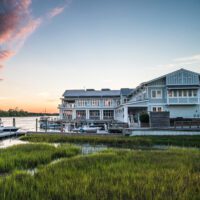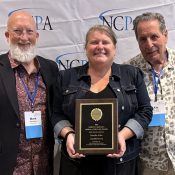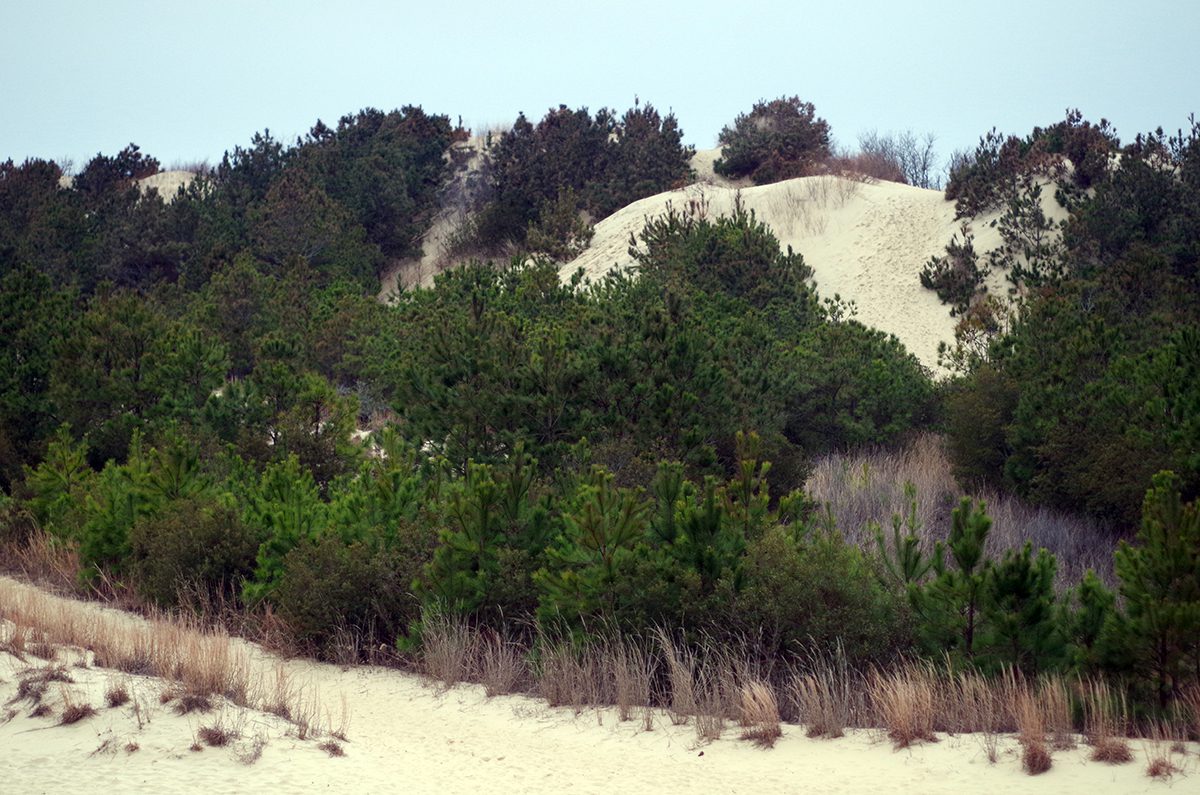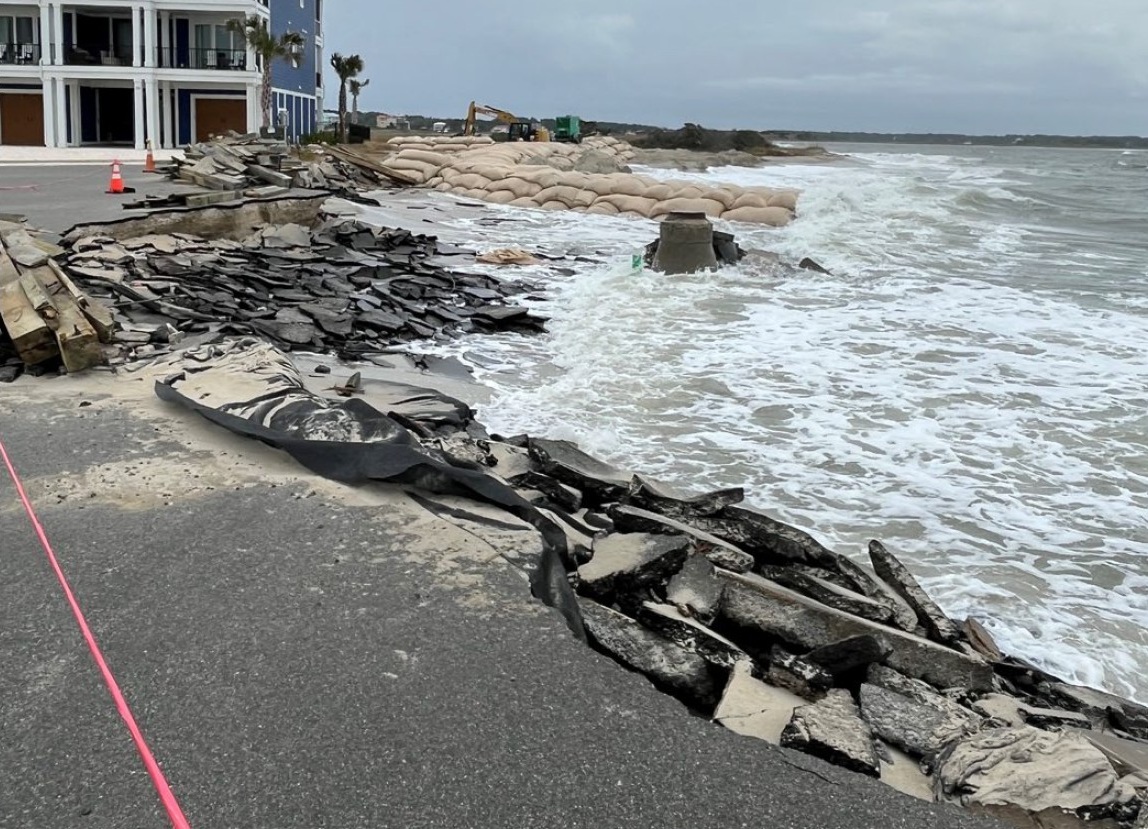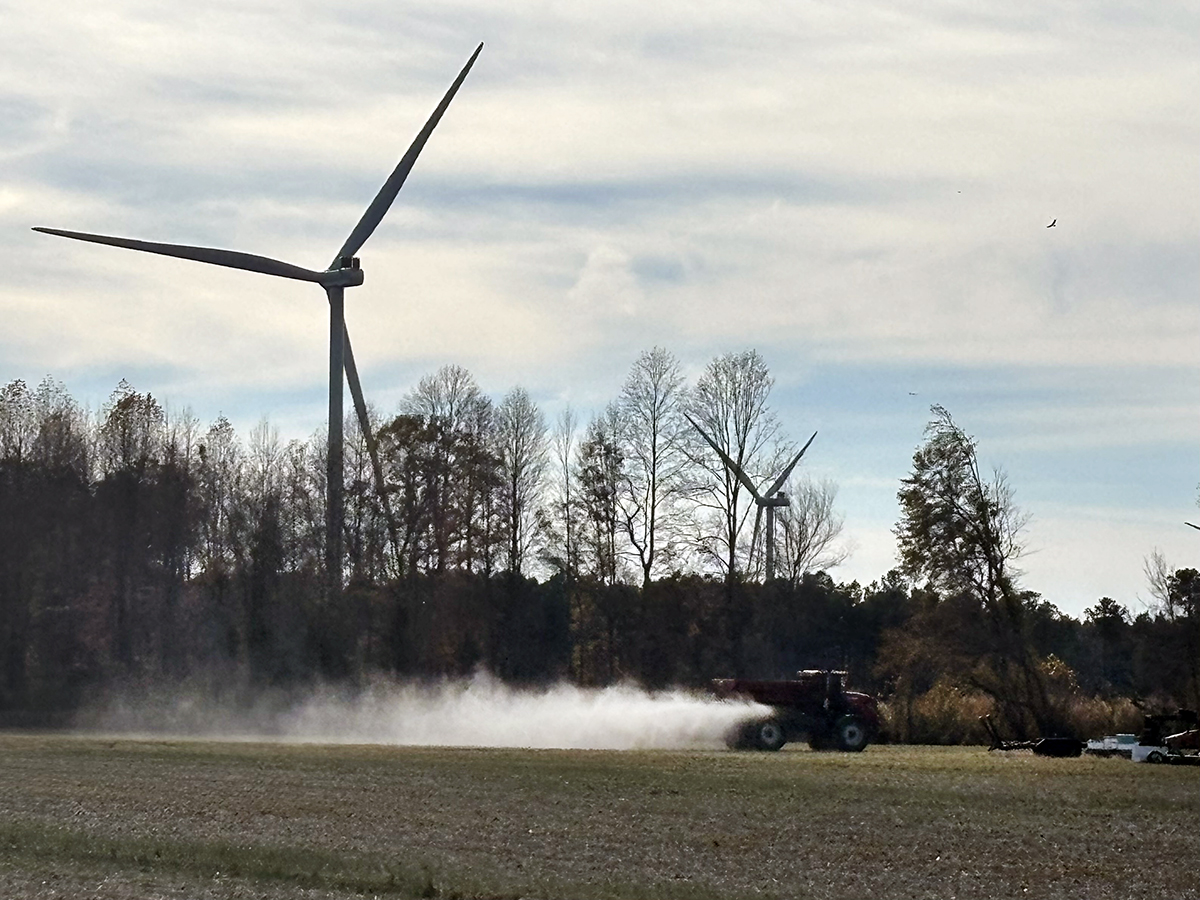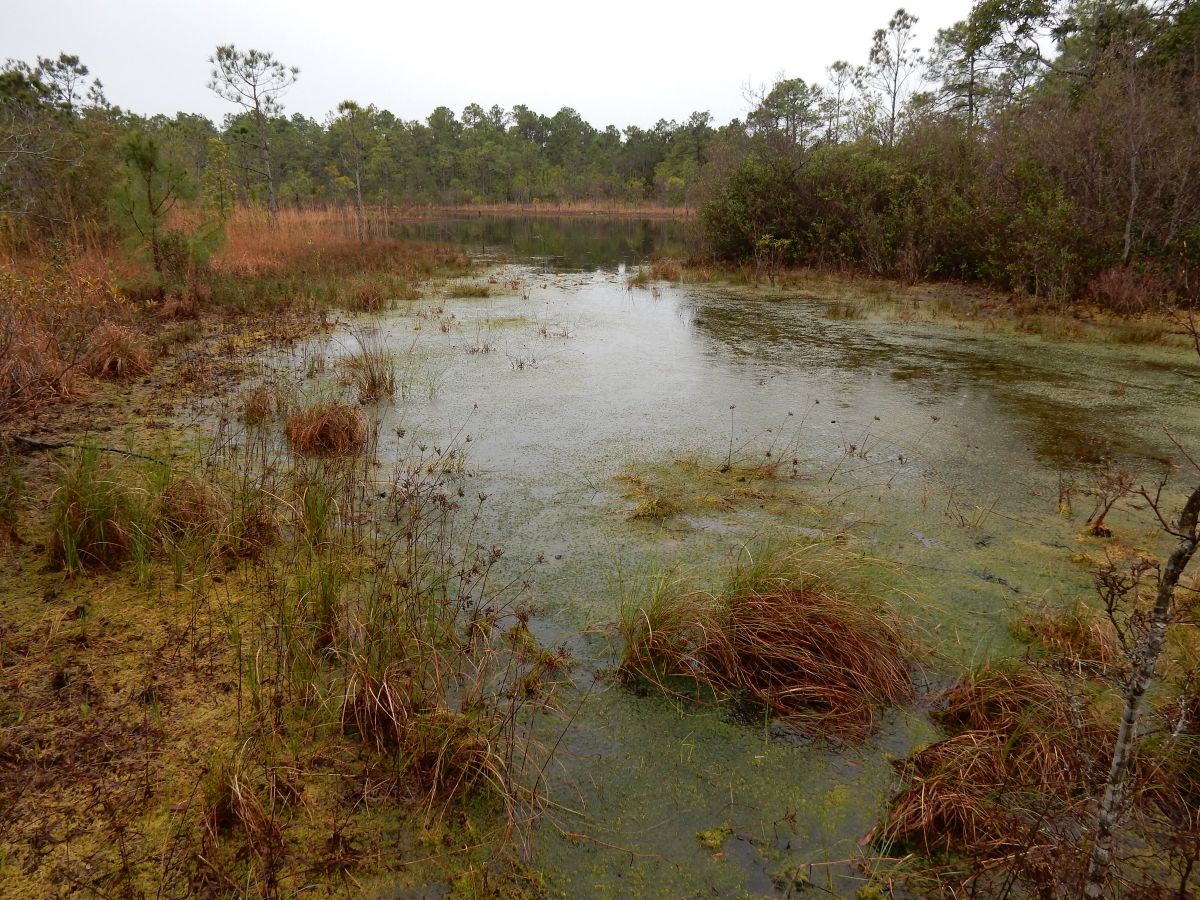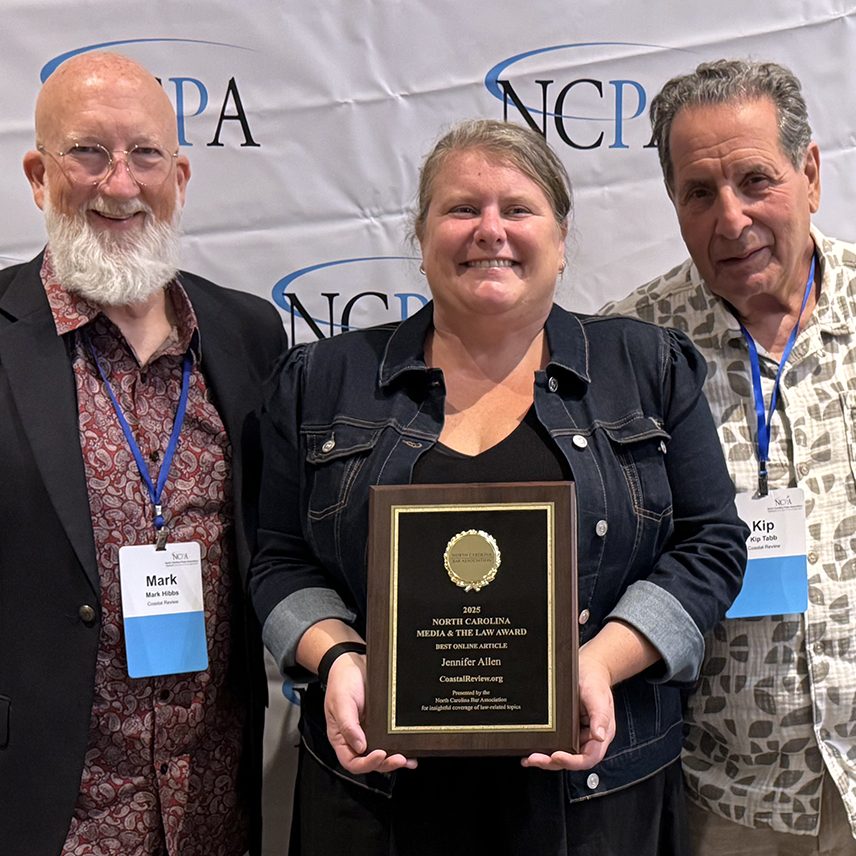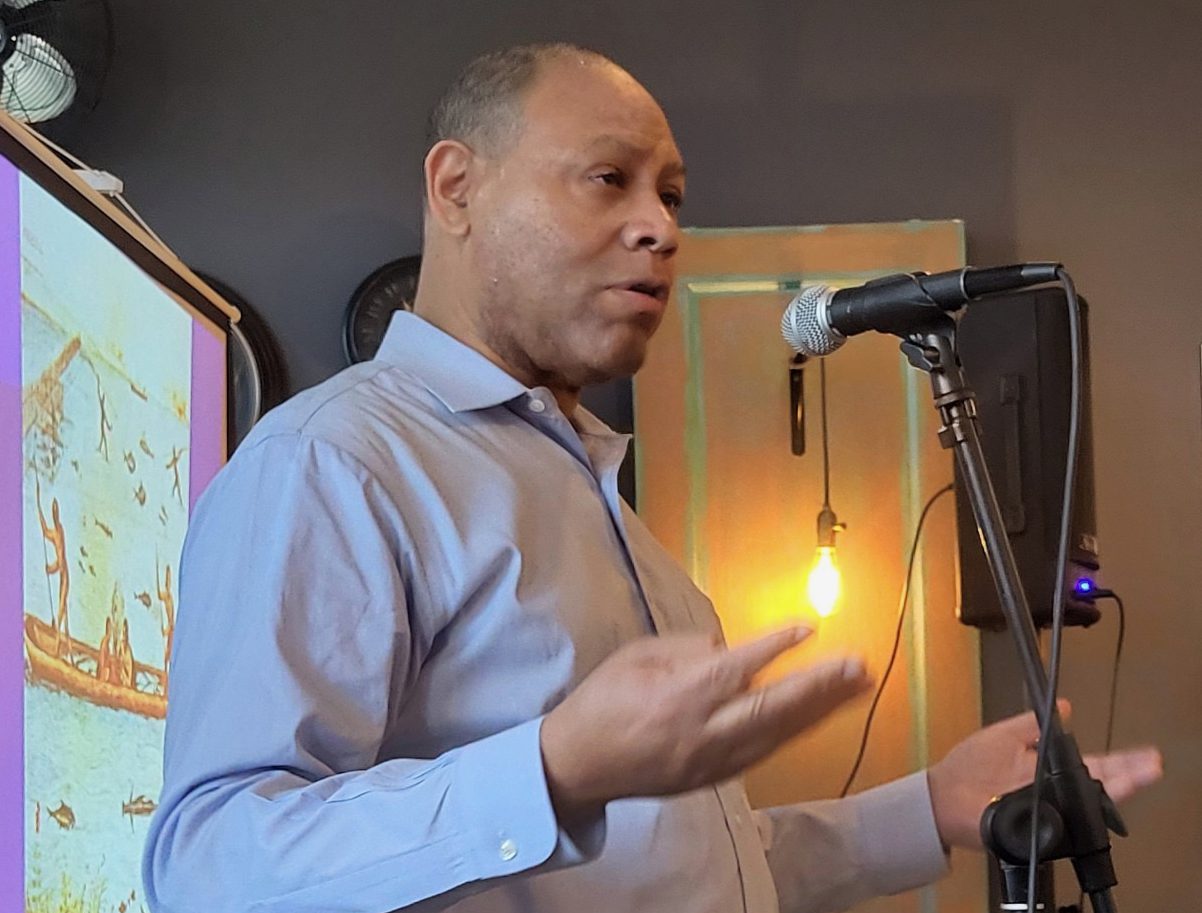
Clarification: Dr. Smallwood is a descendant of the Tuscarora people, not the Cherokee. During his presentation when he said “we were Cherokees” he was explaining that many Native descendants assumed that Cherokee was their heritage. This story has been updated for clarity.
MOREHEAD CITY — About 50 made their way to Mug Shot Caffeine and Cocktails on a chilly Saturday afternoon in mid-January to hear Dr. Arwin D. Smallwood explain “The History of the Coree and Neusiok Native Americans of Carteret County, North Carolina.”
Supporter Spotlight
Smallwood was the first to present for Coastal Carolina Riverwatch’s new initiative, “Cultural Perspectives Series: Coastal Indigenous Communities and Ecological Wisdom.” The nonprofit organization works to protect the water bodies, estuaries and coastline in the White Oak River Basin, mostly in Carteret, Jones, Onslow and Pender counties.
“I’m still just an ol’ country boy from eastern North Carolina, and that’s never left me, and it’s still a part of who I am,” Smallwood began. “I grew up in Bertie County in Indian Woods,” which was the old Tuscarora reservation established in 1717.
Now the dean of the College of Liberal Arts at North Carolina Central University in Durham, Smallwood has spent his career studying the relationships among African Americans, Native Americans and Europeans in eastern North Carolina during the colonial and early antebellum periods.
During his presentation when he said that while growing up in Indian Woods, “we were Cherokees” and “grandma was Cherokee, right?” he was illustrating that many Native descendants assumed their heritage was Cherokee because the Tuscaroras’ history had largely been erased.
Smallwood said that he never fully understood who the Tuscarora and other Native groups in eastern North Carolina were until he was a student at N.C. Central, where he earned his bachelor’s and master’s degrees.
Supporter Spotlight
“We didn’t know anything much about our community, other than we’ve always been from there,” he said. “I knew all my family and all my people, but we didn’t know very much about the history of the area beyond our family lore and family stories.”
In a class on state history he read “North Carolina: The History of a Southern State,” written by “two great professors out of Chapel Hill,” Hugh Talmage Lefler and Albert Ray Newsome.
They mentioned his community, Indian Woods, by name in the first chapter, and “I said to myself, if this is significant enough to be in this book from these two great Carolina scholars, then it must be significant,” Smallwood explained. This inspired him to commit his life to learning and researching as much as possible about Native peoples, particularly Tuscaroras and those in eastern North Carolina.
Smallwood went on to earn his doctorate in early U.S. and African American history from the Ohio State University, and has held positions at North Carolina Agricultural and Technical State University in Greensboro, the University of Memphis in Memphis, Tennessee, and Bradley University in Peoria, Illinois.
Smallwood said that, because he was presenting in Morehead City, he narrowed the focus of his talk to the Coree and Neusiok of Carteret County, who are among several groups in the region of Iroquois origin and have a connection to the Tuscarora whom he studies.
The Iroquois are an ancient people who migrated from Central America and Mexico thousands of years ago, to what is now the Midwest, then to what is now the state of New York. Many moved south from there, following the valleys and rivers, eventually reaching eastern North Carolina.
The Coree, Neusiok, Tuscarora, Meherrin and Nottoway, who straddle the Virginia and North Carolina border, are Iroquois, or the Haudenosaunee people. “We call them Iroquois. It was a name given to them by the French, but their Native name is Haudenosaunee,” or people of the long house.
“The Iroquois said that they had a confederation,” Smallwood continued. “If you attack one of the Iroquois, you attack them all. If you attack the Mohawks, then all of the Haudenosaunee would attack you. If you attack the Tuscarora, all of the Haudenosaunee and the Allies will attack you. They were a family. They were all kin.”
The Tuscaroras were the largest and most powerful group at one time and were scattered all over eastern North Carolina, from Virginia to the Cape Fear River. The population began to decline as early as Spanish contact in the late 1400s and early 1500s. By the start of the Tuscarora War in 1711, disease and conflict caused the once-heavily inhabited region to depopulate.
There were a “host of other Indians in Coastal North Carolina,” Smallwood said, and while some were Algonquian-speaking peoples, they were allied with the Tuscaroras and Corees at the start of the Tuscarora War, “and that war was as much about control of this region.”
After the Tuscarora war in the mid-1710s, “we call it the Tuscarora diaspora,” large numbers scattered all over North Carolina, Kentucky, West Virginia, Tennessee, eastern Ohio, Pennsylvania into Canada, and many returned to New York.
The Tuscarora had a sophisticated trade network spanning from the Outer Banks to as far south as Florida, as far north as Canada and as far west as Memphis.
The trading paths the Native people created are now the state roadways, like U.S. Highway 70 and N.C. 12, connecting old Native communities that are now North Carolina towns.
One reason the coastal areas were important for trade is the access to seashells. “Native Americans value seashells in the same way that Europeans value gold and silver, diamonds,” and other precious stones. Seashells had great spiritual meaning and were used as currency.
“And to trade, you had to speak Tuscarora. That was the trading language,” he said.
The maps Ralph Lane and John White illustrated when first reaching eastern North Carolina in 1584-85 show a well-established community with religious buildings, houses and gardens.
The Native people knew the land and cultivated for food or medicine different types of crops, many of which were introduced to the settlers and are still grown today. Smallwood gave the example of tobacco, which was originally ceremonial but is now a multibillion-dollar industry, corn, beans and white potatoes.
He recounted traditions from his childhood in Bertie County. Going out at night to fill up the bed of a truck with herring, having wild plums, strawberries, apples, pears and peaches, and watching his mother garden the way her mother did and her mother before her.
“I found that so many traditions and customs that we think are African American or European, are actually Native American and were transferred to us, and we have carried them on — cooking traditions, gardening habits and behaviors,” he said.
“We have passed them on from generation to generation. And we don’t even know why we did these things, but they were transferred somewhere when we were blending cultures,” Smallwood said.
The blending of cultures happened a handful of ways, including early white settlers marrying Native women, and white indentured servants and enslaved African Americans would run away places like the Great Dismal Swamp and intermix with the Native population.
“Our cultures are blended. Native, African and European, and it is what makes us Southern, what makes us American, what makes us North Carolinians,” but, “We’re different here in eastern North Carolina,” he said. “This is home, and we share a culture, and we share an identity, and that identity and that culture has been forged over hundreds of years.”
About the series
Riverwatch Executive Director Lisa Rider told Coastal Review that Smallwood’s “expertise in African American and Native American history, particularly in North Carolina, provides invaluable insights into the often-overlooked narratives that shape our understanding of the coastal communities we serve.”
The organizers launched the series that “recognizes the intertwined histories of African American and Indigenous communities in coastal North Carolina, emphasizing their shared heritage and contributions to ecological stewardship,” and are planning the next installment for this summer.
Secotan Alliance president and founder Gray Michael Parsons is scheduled to be the speaker Saturday, July 12, in Morehead City.
Riverwatch said that the Secotan Alliance’s inaugural symposium, “In the Spirit of Wingina and Beyond” held in May 2024 in Manteo inspired the cultural series. The theme for the 2025 symposium the last weekend in May is “Our Women: Leaders of Indigeneity.”
Parsons is a descendant of the Machapunga-Mattamuskeet people and has focused his efforts on honoring Indigenous leaders and promoting environmental stewardship. He is also the author of “Hope on Hatterask,” a work rooted in his Indigenous heritage.
Parsons founded the alliance “to educate the public on the traditional indigenous principles of the Secotan Alliance under the leadership of Chief Wingina.” The Secotan Alliance was first documented by the English at initial contact in 1584. The alliance territory included Dare, Hyde, Beaufort, Washington and Tyrrell counties. Chief Wingina was beheaded by the English military in June 1586 after an attempt to expand the alliance.
Parsons told Coastal Review that his focus will be on providing a “functional definition and real world understanding of the ‘Indigenous Earth Ethic’ and the inclusive concept of what I refer to as ‘Indigen-us’.”
He added that his goal is to empower all to see and understand their own deep indigenous ancestral identity as a part of the natural world.
“In doing so it is my hope that they will embrace and live a more sustainable life and thus one that is in what I call ‘Righteous Relationship with Creation,’” he said.

